
So this week I thought it worth posting a few reflections on 2010, the year that was, and begin with some thoughts on retail banking (tomorrow will be payments and Wednesday, capital markets).
Surprisingly, retail banking has not had any really startling changes.
Branches are still the focal point, as evidenced by Santander who increased their branch density across the UK this year by a half, to 1400 branches, to become a bigger branch based bank service than HSBC.
Santander, like most banks, believe the branch based model is the key point of customer interaction and building trust. It’s also the place that banks believe customers want to see first, when they consider opening a new account.
Whatever the social media decriers believe when they say that branches are dead, they’re wrong.
Nevertheless, there have been a few innovations in branches, led by Citibank of all banks.
Citibank have been trialling the branch of the future in Hong Kong and Singapore and, after being received well there, launched the first new branch in New York last week.
The branch features wi-fi, touch screens, interactive videokiosks and all sorts of other nifty features.

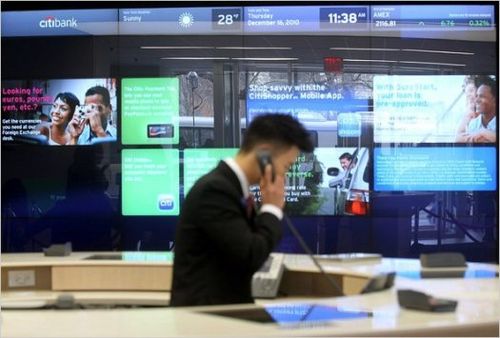
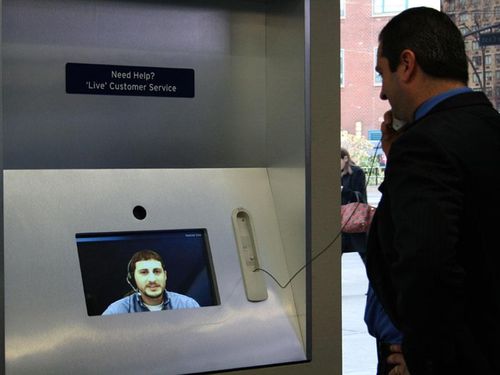
Even tellers!
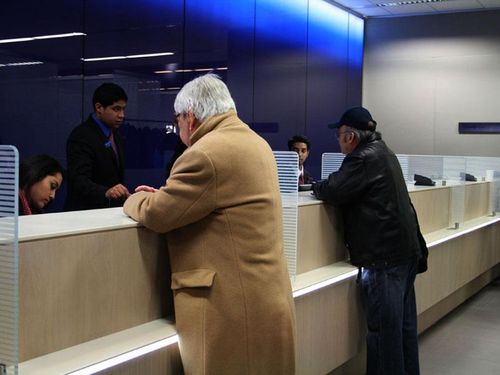
Pictures from PSFK and the Business Insider
Trialling branches of the future is no big new thing, Barclays did it last year ...

... but it is interesting, considering the recent history of the bank, that Citi would embark on such a venture when it’s going to cost them billions to refit branches across flagship cities in the USA and worldwide.
So they obviously believe there’s something still in the branch network.
Mind you, lots of banks believe in branches such as BNP Paribas, Umpqua, our own Metro Bank.
One bank, DBS, even ran a competition for customers to design their branches – a great crowdsourcing initiative – with the winner being a 27-year old design student.
What I really liked here is that 80% of the entries came from people aged 26 years or younger, such as this one designed out of lego bricks.
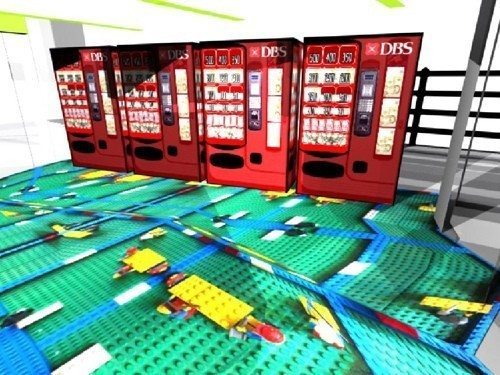
Lovely.
And there are loads of other case studies on branch designs out there now, particularly notable being the summaries of designs from folks like Jeffry Pilcher and Brett King.
Nevertheless, as a post-branch modernist, I’m not convinced about branch gadgets which all of the above represent for me.
Giving out sexy iPads to staff in branches or telling them how to dress is all well and good, but the branch is still a broken cog in the bank retail distribution model.
First, because branches are on the decline long-term, whatever Santander and their cohorts believe.
Second, because modern bank branches with whizz-bang electronics will always lose to an old and dingy branch with a great team.
In other words, branches are all about humans.
The best branches will be those with a great branch manager. The manager inspires the team – people leave managers, not companies – and so a bank with 2,000 branches needs 2,000 great branch managers to be truly different and high performing.
Whatever the technology.
And what banks really need is probably about a tenth of the branches they currently sustain, and staff them with amazing managers.
Nevertheless, most banks still believe in expanding the branch network, as that's where they believe the customer experience, engagement and relationship starts and ends.
Equally, ATMs are still alive and well.
This was ably demonstrated by the Spanish bank BBVA, who launched the ATM of the Future earlier this year:
The Future of Self-Service Banking from IDEO on Vimeo.
Created by BBVA with design firm IDEO and ATM manufacturer NCR, the new design is like an iPad stuck on a wall that dispenses money.
Neat.
Mind you, there are lots of things happening in the remote retail space with iPads that are really changing the game.
Although the iPad only came out in Easter this year, it’s already pervasive with three million sold in just 80 days and around 13 million units sold this year since the launch last April.
Phenomenal.
And, interestingly, financial services dominates this space, with 36% of iPad activations this year from the finance sector according to a survey from Good Technology:
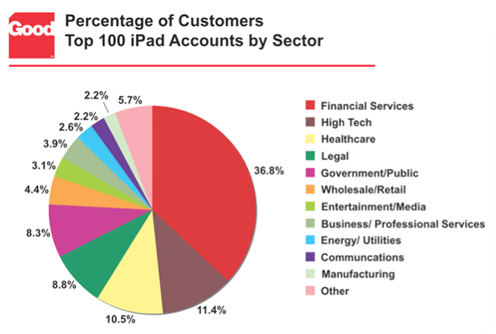
What are they doing with it?
There’s lots of high net worth and investment banking usage for a start, with JPMorgan giving iPads to all of their investment bankers.
But we’re focused upon retail here, and there have been several interesting retail developments, with banks across the world launching apps.
Chase were one of the first to release an iPad app, and most US banks are offering some form of iPad app usage.
Spanish banks got into iPad banking early in Europe, whilst Bank Hapoalim was one of the first I heard about in the Middle East.
Some banks even launched complete iPad branches, and there are new ones every day (today's is Charles Schwab), but it’s still questionable about where all of this is going.
After all, iPad’s good for banking for dummies, but it’s still an iFad.
So what’s been really important this year, if all the gadgets are just dull?
Social media?
Not really.
There’s been some good things launched as social platforms, such as those of First Direct, but not a great deal of radical bank activity in blogging, YouTube, twitter or ...
... oh, hold on, there is one notable experiment: the Facebook bank from ASB, New Zealand.

Launched in September with a team of eight staff to answer customer questions and engage them online, it’s a good example of an experiment.
But then again, it is just that: an experiment.
Will all banks move to branch services on Facebook online?
No.
To me, it’s similar to the Second Life bank experiments ... interesting, but not for the long-term.
It’s another iFad.
So what has been the biggest change in retail this year?
It has to be mobile.
Mobile is THE change in 2010.
Mobile is everywhere.
And yes, I know the detail brigade will say: well, isn’t iPad apps mobile Chris?
Yes ... ish.
But mobile - from NFC contactless to smartphone apps, from P2P payments to bank/telco partnerships, from text alerts to using the mobile to track fraud - has come of age in banking in 2010.
It’s been bubbling away for at least seven years, when I first talked about mobile banking, and it’s finally and definitely here and now.
I’m not going to cite specific mobile usage or illustrations as you can find loads by clicking here.
Let’s just say 2010 was the year mobile really hit banking.
In fact, if I were making a prediction, it would be this: within the next decade, bank account numbers will be portable across banks. Like mobile telephone numbers, if you change your provider, you can take your number with you.
Add on to this the fact that the mobile is your main number, the bank account number will incorporate the mobile for account details.
The mobile will be an authentication, verification, validation and identification system.
Mobile with voice biometric and potentially other identity checks built into the phone - a fingerprint or eyeball check - will be the #1 device for all bank activity.
Just you wait and watch.
Meanwhile, if it took the mobile telephone seven years to move from possibly being disruptive to being mainstream, then social media will come of age around 2012-2014 as this first hit my radar in 2005 as a potential for bank distribution.
Interesting.
If that is the case, then the debate I’ve been having with Venessa Miemis about the future bank may be in our heartland sooner than we think.
Chris M Skinner
Chris Skinner is best known as an independent commentator on the financial markets through his blog, TheFinanser.com, as author of the bestselling book Digital Bank, and Chair of the European networking forum the Financial Services Club. He has been voted one of the most influential people in banking by The Financial Brand (as well as one of the best blogs), a FinTech Titan (Next Bank), one of the Fintech Leaders you need to follow (City AM, Deluxe and Jax Finance), as well as one of the Top 40 most influential people in financial technology by the Wall Street Journal's Financial News. To learn more click here...

